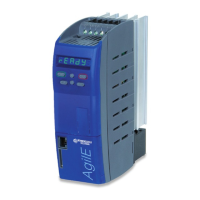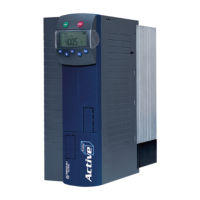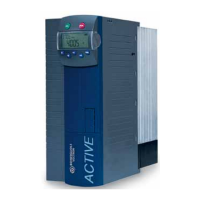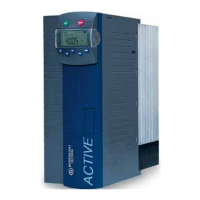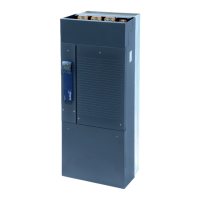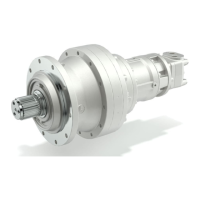Parameter descriptions
426 Maximum Leading
The parameter
Maximum Leading 426 limits the difference between the output of the ramp and the
current actual value of the drive. The set maximum deviation is a dead time for the control system
which should be kept as low as possible.
In case the drive is loaded heavily and high acceleration and deceleration values are selected it is
possible, that a set controller limit is reached while the drive is accelerated or decelerated. In this
case, the drive cannot follow the defined acceleration or deceleration ramps. With
Maximum Leading
426, you can limit the maximum leading of the ramp.
No. Description Min. Max. Fact. sett.
426 Maximum Leading 0.01 Hz 999.99 Hz 5.00 Hz
Example: Frequency at ramp output = 20 Hz, current actual value of drive = 15 Hz, selected
Maxi-
mum Leading
426 = 5 Hz
The frequency at the ramp output is increased to 20 Hz only, it is not increased further. The differ-
ence (leading) between the frequency value at the ramp output and the current actual frequency of
the drive is limited to 5 Hz in this way.
430 Ramp Rise Time
The load occurring in a linear acceleration of the drive is reduced by the adjustable modification speed
(S-curve). Via the S-curve, the drive can be accelerated and decelerated more uniformly and load
peaks upon the start of the acceleration and deceleration can be avoided. The non-linear curve of the
frequency indicates states the time range in which the frequency is to be guided to the set ramp. Set-
ting the ramp rise time increases the acceleration and deceleration times.
The value set for the
Ramp Rise Time 430 is effective for:
− acceleration and deceleration
− clockwise and anticlockwise operation
If the ramp time is set to 0 ms, the S curve is deactivated.
430 Ramp Rise Time 0 ms 10000 ms 0 ms
149
Reference Values 06/2013 Operating Instructions
Agile

